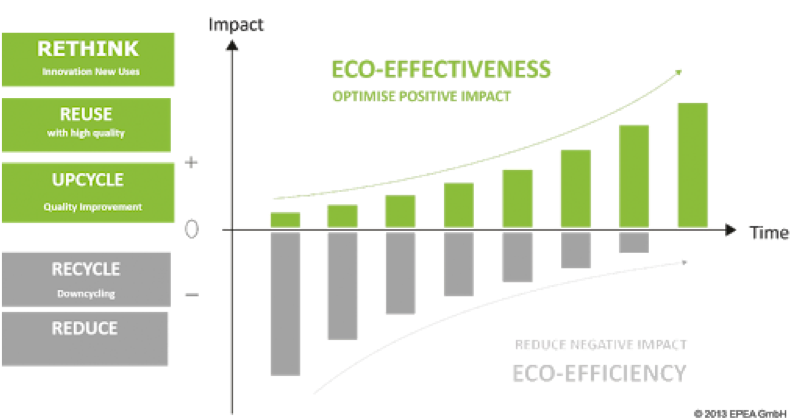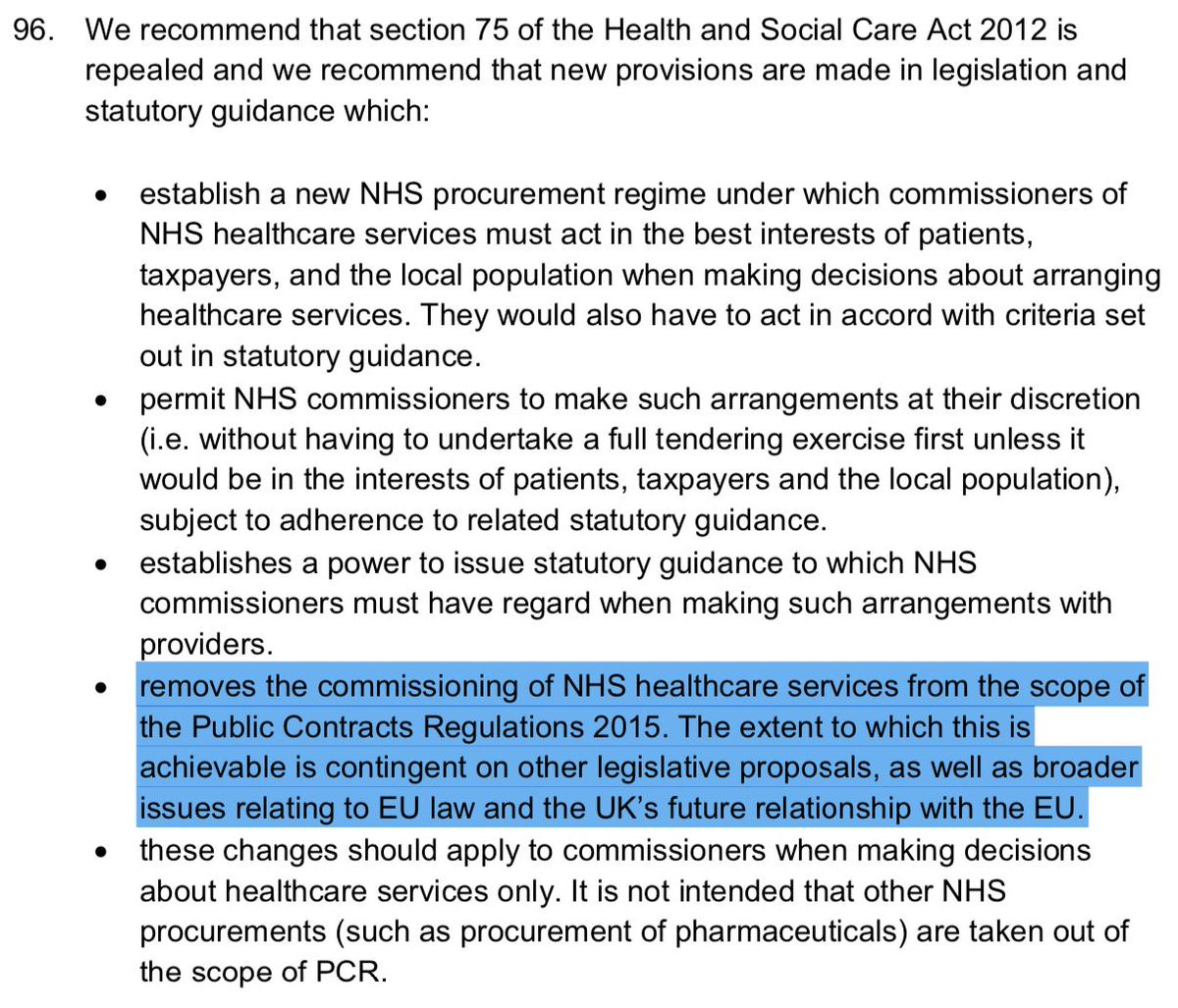This guest post by Dr Deividas Soloveičik provides interesting background and critical remarks on a recent Lithuanian reference to the Court of Justice for a preliminary ruling on issues concerning several aspects of the 2014 rules, in particular interesting boundary issues between qualitative selection and technical specifications, as well as exclusion of consortium partners. It will be interesting to keep an eye on the case, as it brings an opportunity for the CJEU to expand its case law.
Some difficult questions
The very end of the 2019 was highlighted by a new lengthy preliminary reference to the CJEU by the Supreme Court of Lithuania (the Supreme Court), in a case that raises a broad range of issues concerning economic and financial standing requirements, the boundary between qualitative selection and technical specification criteria, confidentiality of procurement documents in the context of ensuing litigation and the consequences of the provision of false information. This case and the initial findings of the Supreme Court will be assessed in this “executive summary” of the references sent to the CJEU—which, at the time of writing (17 January 2020) are yet to be admitted (although the referral has been assigned case number C-927/19, Klaipėdos regiono atliekų tvarkymo centras).
Before proceeding to the analysis, it is worth recalling that, in relation specifically to the point on submission of false information and its impact on the potential exclusion of the tenderer concerned the Supreme Court was perfectly aware of the recent Judgments in Meca (C-41/18, EU:C:2019:507, not available in English) and Delta (C-267/18, EU:C:2019:826) case-law at the time of the reference to the CJEU. However, the Court extends its query and mainly is seeking to find out whether (i) the act of provision of false information by one of the consortium partners “infects” the rest of the team and (ii) what the role of the national court hearing this kind of legal case in the light of the above-mentioned Meca and Delta case-law is, when the CJEU previously specifically emphasized the importance of the discretion of the contracting authority while handling these kind of legal (procurement) situations.
Background
The Lithuanian contracting authority started an open tender for the services of municipal waste gathering and removal to landfill treatment facilities. The procurement procedure was regulated by national and Directive 2014/24/EU. The procurement documents inter alia included the following requirements:
Technical specification: the service provider uses vehicles for waste management services that are in line with the requirements of EURO 5 standard; all vehicles must have installed constantly functioning GPS transmitters that would allow the contracting authority monitoring the exact location and movement route of the vehicle. The supplier must allow the contracting authority and the administration of the Neringa municipality to use its installed GPS as much as it is necessary to monitor the location and movement routes of the vehicles used in providing the services of waste management and transporting waste to landfill. If sub-suppliers are involved, this requirement is also applicable for their vehicles.
Technical and professional capacity: the supplier must own or lease (or possess otherwise) the necessary quantity of vehicles needed to execute the public contract and these must comply with the requirements listed in the technical specifications. The requirements for qualification and technical specification were almost identical.
Financial and economic capacity: tenderers’ average annual operating income from carrying out the activities related to the management of mixed municipal waste during the past 3 financial years (or the period since the supplier’s registration date if the supplier carried out the activities for a period less than 3 financial years) had to be not less than EUR 20,000 EUR excluding VAT.
There were three tenderers in a procedure: the plaintiff, another company and an awardee of the public contract, which was a consortium comprised by three individual companies. The plaintiff took second place. The plaintiff submitted the claim against the contracting authority claiming that the winner had not complied with the: (i) technical specifications – the vehicle indicated by the supplier is not for the mixed waste transportation and considering the years of manufacture – it does not comply with the requirements of the EURO 5 standard; (ii) financial and economic requirements - the average annual operating income of the supplier while carrying out the activities related to the management of mixed municipal waste during the past 3 financial years must be not less than EUR 20 000 EUR excluding VAT, but one of the joint venture partners of the supplier does not carry out waste management activities overall. The crux of the dispute was thus the following: one of the consortium partners made a statement that it had experience in management of mixed municipal waste. The claimant contended that this might not have been the truth because this partner of the consortium had never rendered any services of this type. So the claimant maintained that (a) this consortium partner did not have the needed qualification and (b) that this consortium partner made a false statement. This must have led, in the opinion of the claimant, to rejection of the consortium’s tender.
The court of first instance dismissed the claim but the appeal was successful, and the court obliged the contracting authority to re-execute the evaluation of the tenders. The Court of Appeals considered that the winner of the tender did not prove that it had the technical capacity, because the original tender did not include the information on the required vehicles, which were provided by the tenderer only after the submission of the bid to the contracting authority.
The initial awardee of the contract did not agree with the findings of the Court of Appeals and filed a cassation complaint which was accepted by the Supreme Court.
Regarding the financial and economic capacity as a qualification criterion
By raising the question on the scope of the qualification requirement to hold a relevant financial and economic capacity, the Supreme Court addressed the above-mentioned statements of the procurement documentation which required each tenderer to have an annual operating income from carrying out the activities related to the management of mixed municipal waste during the past 3 financial years or the period since the supplier’s registration date (if the supplier carried out the activities for a period less than 3 financial years) of not less than EUR 20,000 EUR excluding VAT. There were three legal aspects which triggered the Court’s doubts.
First, by reading Art. 58(3) of Directive 2014/24/EU the Supreme Court was prone to conclude that the latter limited the discretion of the contracting authority to require the suppliers to have a turnover from a very specific (niche) economic (business) activity as a sole and main financial criterion. The Court reasoned that the main goal of Art. 58(3) of the Directive was to help contracting authorities finding a financially trustworthy and economically stable contract partner. Therefore, the Court believed that, on the one hand, it allowed the contracting authorities to request from the tenderers having a general financial turnover (as specified in the procurement documentation) and, on the other hand, it left leeway to request the proof of the financial (monetary) capacity gained from a more specific business activity, because the wording of Art. 58(3) of the Directive 2014/24 contains a statement “... including a certain minimum turnover in the area covered by the contract”. However, the Court considered that any requirement for the suppliers’ qualification which is based on Art. 58(3) of Directive 2014/24 (and respectively the national procurement law) should (or even must) a priori address the general financial turnover and must not use a turnover from a niche commercial activity autonomously (i.e. as a sole requirement for financial and economic qualification). In the given case, it seems that the Supreme Court doubted if the contracting authority had a right to require an annual operating income to be received from carrying out the activities related to the management of mixed municipal waste as a single selection ground. The wording of the ruling suggests that the Supreme Court deemed that the contracting authority had a right to require a general turnover (e.g. 200,000 EUR annually) and an income from a specific activity (e.g. 20,000 EUR from management of mixed municipal waste), but not only the latter.
Second, by reading a text of the ruling it seems that the Supreme Court reasoned that if the interpretation of the Art. 58(3) of the Directive 2014/24 was otherwise, i.e. as allowing the contracting authority to require financial and economic standing on the basis of a narrow experience (like in a given case from management of mixed municipal waste), then, in the Supreme Courts’ view, there would be a blurred line between the qualification related to financial and economic standing and the one connected to technical and professional ability. There would hardly be a difference between Art. 58(3) and Art. 58(4) of Directive 2014/24. In other words, the Supreme Court considered that even if legally the requirement for qualification was named as a financial and economical one, it in fact would be the requirement for technical and professional ability when it required financial flows to be gained from a very specific practice. Therefore, it might be said that the Court’s question to the CJEU has an indirect perspective, namely the Court wants the CJEU to clarify the lines between Arts. 58(3) and 58(4) of the Directive 2014/24/EU.
Third, the Court went on to examine the CJEU case-law in Esaprojekt (C-387/14, EU:C:2017:338) and its possible application to the case at hand. It must be recalled that the awardee of the public contract was a consortium of three companies. One of these companies (say company A) constantly held that it had the required financial qualification, because it maintained that this requirement was not personal and could be relied upon as a capacity gained from the execution of a previous public contract which was executed by the consortium to which company A was a member. However, company A did not itself render the services related to the management of mixed waste and therefore it had not received any income from that. Therefore, the claimant contended that the company A could not hold that it had received any income from the management of mixed municipal waste and, therefore, it did not have a required qualification. The Court recalled that in Esaprojekt the CJEU stated that an economic operator cannot refer to the qualification gained by the whole consortium and may only be deemed to be qualified to the extent it itself executed the relevant (part of) public contract. Therefore, the Supreme Court wonders if this ratio decidendi, delivered in Esaprojekt in respect of technical and professional ability as a qualification requirement, should be applied on the same grounds while dealing with financial and economic standing of the suppliers.
In the light of these considerations, the Court asked the CJEU to answer:
(i) if the requirement to prove the annual income of the relevant size, received from a specific commercial activity (the management of mixed municipal waste), should be subsumed under Art. 58(3) or Art. 58(4) of the Directive 2014/24;
(ii) if the answer to the previous question had any effect on the application of the rules, provided in Esaprojekt, namely, whether it is allowed under the EU public procurement law to disregard the financial and economical capacity, gained during the joint bidding and execution of the previous public contract, if this capacity in corpore is relied upon by a single member of consortium in a later procurement procedure. In other words, the Supreme Court seeks to find out if a consortium member (company A) in a present tender can rely on a qualification, gained by another consortium, to which this company A was also a member, although company A did not actually and directly execute the part of the contract to which it seeks to rely in the later (present) tender (in this case – the management of mixed waste).
Regarding the separation between professional and technical capacity and technical specifications
It is a consistent and already an old national case-law which makes a very clear and precise dividing line between the requirements of the suppliers’ qualification (selection criteria) and technical specification. The Supreme Court maintains a principle that this separation has a substantial practical implication because under the settled case-law of the Lithuanian courts each discrepancy of the tender that is related to qualification (missing document, insufficient provision of required information on qualification, etc.), may be easily rectified. This means that it is forbidden to reject the a tender without at least requesting for a decent explanation from the supplier. The Supreme Court holds that such approach is in line with the view of the CJEU, expressed in such cases as SAG ELV Slovensko (C-599/10, EU:C:2012:191) or Manova (C-336/12, EU:C:2013:647). Meanwhile, any part of the tender that is connected to the requirements of technical specification cannot be amended, rectified or explained by an economic operator at a later stage of procurement in such a way as to turn the non-compliant original tender into a compliant one.
It must be recalled that in this case the requirements for the technical and professional capacity (the supplier must own or lease (or possess otherwise) the necessary quantity of technical measures needed to execute the public contract) were copy-pasted to the technical specification. Therefore, the situation itself became confusing: if those conditions were deemed as criterion for qualification, then there must have been a possibility to provide the additional information upon the request of the contracting authority (what was one of the arguments by the respondent in a case). Meanwhile, in case of an opposite legal approach, i.e. that such requirements are a part of technical specification, any amendment to the original tender after the submission deadline would undergo a much stricter test.
Therefore, the Supreme Court cast doubts on the legal possibility of the mentioned technical and professional qualification requirement. Although the Court referred to Commission v. Netherlands case (C-368/10, EU:C:2012:284) as the one allowing “relevant similar simultaneous requirements both as a condition of technical specification and criteria for entering into a public contract or its execution”, the Supreme Court was not sure if the qualification criterion can be so detailed and exhaustive as it was in the disputed procurement. The Court went on with its reasoning that the more detailed the requirement on qualification was, the more likely it was already a condition of the technical specification and not a selection criterion. In other words, it seems that the Supreme Court was prone to consider that the requirement on qualification cannot be so detailed as it should be in case of technical specification.
Thus, the Court asked the CJEU if the requirement of the procurement documentation that the economic operator used the vehicles needed for waste management services, that were in line with the requirements of EURO 5 standard; all vehicles must have had installed constantly functioning GPS transmitters, that would have allowed the contracting authority monitoring the exact location and movement route of the vehicle fell within the scope of regulation of Directive 2014/24 a) Art. 58(4), b) Art. 42 together with the Annex VII or c) Art. 70.
Regarding the scope of obligation of confidentiality in the light of effective remedies in public procurement
Although since Varec (C-450/06, EU:C:2008:91) there has not been a major development of the concept of confidentiality in public procurement law, on the contrary, in Lithuania it is one of the hottest legal topics during the recent five years. It has been circulated in all possible layers of the legal world, starting from the legislation and ending with the widely elaborated case-law [more on this might be read here: D Soloveičik, ‘Rethinking the confidentiality in public procurement: does public mean naked public?’ (2018) 1 UrT 11-26; for comparative perspectives, see the contributions to K-M Halonen, R Caranta & A Sanchez-Graells (eds), Transparency in EU Procurements. Disclosure Within Public Procurement and During Contract Execution (Elgar 2019)). In a nutshell the current national legal ecosystem in respect of confidentiality could be described as promoting extreme transparency in public procurement and thus limiting the disclosure of competitors’ information in very rare cases, mostly related to top commercial secrets of private parties. The Supreme Court considers that the mentioned “pro disclosure” case-lawis in line not only with the requirements of the principle of effectiveness of remedies in public procurement, but also with the regulation of Directive 2016/943/EU on the protection of trade secrets.
Despite the legal ecosystem, where the transparency should prosper, paradoxically the administrative practice during the procurement procedure is usually different. The contracting authorities, albeit being precisely aware of the mentioned juridical requirements to grant access to the relevant documentation, still are very disclosure averse. In a majority of procurement cases the contracting authorities deny the tenderers their right to gain the access to the competitors’ commercial proposal by arguing that this might lead to an illicit leak of a commercial secret. Moreover, while rejecting the claims of the tenderers, contracting authorities tend to give very abstract and uncomprehensive answers.
This leads to a situation where tenderers launch their legal challenges in from of the courts without having seeing the full picture of the procurement process and, therefore, being refused an effective protection of their rights as required by the EU public procurement remedies directives. Usually in such cases the situation is rectified by the courts, which tend to disclose the information if it is not a commercial secret. As there is a two-layer procurement dispute system in Lithuania, where access to the court is guaranteed only after the prior submission of the claim to the contracting authority itself, the Supreme Court raised the issue of consistency and rationality of such practice when contracting authorities try to hide the information (usually the winners’) and then such information is only gained at the stage of litigation in court. This makes the procurement dispute at the stage of contracting authority useless. Therefore, the Court referred to Art. 1(1)(3) of Directive 89/665/EEC, Art. 21 of Directive 2014/24/EU and Directive 2016/943/EU and asked the CJEU if:
(i) if the contracting authority must deliver to the requesting tenderer the information comprising the competitors’ tender if such request is related to a legal challenge of such tender and is needed to verify its compliance with the requirements of the procurement documentation, subject to the fact that the claiming tenderer previously asked for this information. It is interesting to note that actually the main point of that question is whether the contracting authorities should be obliged to disclose the required information in order to avoid the mentioned practice that the information is locked during an early stage of the dispute, meanwhile it will still most likely be unlocked when it reaches the court. The hidden idea of the inquiry is that if it appears that the answer to the question is positive and the contracting authorities would be obliged to be almost fully open, then less disputes might reach the courts as the tenderers, after seeing the competitors’ tender, may find out that their claim would be unfounded.
(ii) In case the contracting authority rejects the suppliers’ claim, if its answer must be comprehensive, clear and informative, even though such an answer and its wording may disclose the confidential information. In other words, the Supreme Court wants to know to what extent the contracting authorities may be reserved while replying to the disclosure requests from tenderers, on the grounds that providing a detailed justification for the rejection could in itself constitute a breach of confidential treatment.
(iii) The mentioned provisions of the EU law must be understood as allowing the tenderer to separately challenge before the court the decision of the contracting authority each time it decides to reject the suppliers’ request for access to the competitors’ bid. It has to be mentioned that it is a long-standing national case-law which allows this kind of legal action in Lithuania. So, it seems that the Supreme Court knows the answer because it gave it to all the practitioners itself a long time ago. However, the inquiry sent to the Luxembourg is more an implicit request for verification if such case-law is in line with the EU legal regulation. An additional aspect to this inquiry is that the Supreme Court wanted to know if in the above-mentioned legal situations the tenderer may claim only the denial of the access to information, leaving the rest of possible legal claims, related to the competitors bid, aside. It seems that the Court is prone to think that if the answer to this question was positive, it would most likely mean that such tenderer would not lose its right to challenge these additional irregularities of the competitors’ tender after it receives the relevant information from the contracting authority, even if it is done with the assistance of the court. In other words, this part of the question is related to possible (non)application of limitation of actions.
(iv) Another two questions were related to a procedural law. The Court asked if the national court, hearing the public procurement dispute, in all cases must require the information on the challenged competitors’ tender from the contracting authority, despite its previous actions during the public procurement procedure. And a related question: if Art. 9(2)(3) of Directive 2016/943/EU must be understood as requiring the court, which declined the disclosure of the competitors’ tender to the claimant (but having this information in a file), to take this information into consideration while deciding on a merits of the case. In other words, the Supreme Court is asking whether the courts hearing the public procurement cases and having the information on one of the tenderers’ tender and which they decided to leave locked (meaning that the claimant would not see this data), are under an obligation to examine such information ex officio and take it into consideration while deciding the case. This means that in case of a positive answer to that question, the claimant might still have a chance to win the case, even without seeing the whole materials of a case-file, if there were actual irregularities of the competitors’ tender and the court spotted them.
Regarding the legal consequences of submitting false information and the courts’ discretion to decide upon this
Under the national provisions of the Law on Public Procurement, economic operators can be “blacklisted” if they provide false information to the contracting authority during the procurement procedure. In case of a joint bidding, all of the consortium members are included into this list.
In the case before the Court, one of the members of the consortium that was awarded the public contract was presenting to the contracting authority an inconsistent information regarding its previous financial income. The Supreme Court mentioned that according to the Esaprojekt ruling (above), there is no need to identify the intentional misbehavior of the tenderer in order to reject its bid. The Court reminded that purely negligent actions are sufficient to disqualify the tenderer if such actions could seriously mislead the contracting authority and negatively affect the result of the procurement. Therefore, taking into consideration the facts of a case, the Supreme Court stated that the actions of the mentioned consortium member, in Court’s view, might be considered as negligent.
After the Court came to such a conclusion, on the one hand it most likely must have decided that the tender of the consortium was invalid and that all the members were blacklisted. On the other hand, the Court was stopped from moving towards this legal direction because of two reasons. Firstly, the contracting authority was of the opposite opinion. It did not hold the tenderer negligent and neither it considered the consortiums’ given information as false. Therefore, the Court had a doubt if it can decide on its’ own initiative completely opposite to the direct will of the contracting authority. Secondly, these doubts were amplified by the recent findings of the CJEU in the above-mentioned Delta and Meca cases, where the Court of Luxembourg emphasized that it is a contracting authority, and only it, which is empowered to decide regarding the reliability of the economic operator. In the light of these conclusions, the Supreme Court decided to stay proceedings and request for explanation from the CJEU on the scope and limits of the discretion of national courts in such legal situations.
Besides, the Supreme Court raised a question on whether in case of submission of false information to the contracting authority the consequences of blacklisting must be applied to all members of the consortium. The Court noted that it is natural to expect the possibility of legal risks, related to the participation in a tender (e.g. the need to replace the partner due to its default, etc.). However, the Supreme Court considered that any such risk should be limited to the particular procurement and not be implemented in a way of a total ban on participation for a specified period of time and for all the consortium members. Although the Court did not use this wording, but it implied that this might be disproportionate.
Therefore, the Court asked the CJEU two following questions:
(i) If, in the light of the Art. 57(4)(h) of Directive 2014/24/EU and the Delta case, the national court is allowed, despite the will of the contracting authority, to ex officio decide that the economic operator intentionally or by negligence provided the contracting authority with false information and must have been excluded from the public tender.
(ii) If, in the light of the Art. 57(4)(h) of Directive 2014/24/EU and the principle of proportionality, the disqualification of a tenderer from a procurement procedure with the possible consequences of being “blacklisted” for the specified period of time is applicable against all the members of a joint bidding consortium or just against the economic operator responsible for such misbehavior.
Conclusion
There is no doubt that the Lithuanian Supreme Court triggered important issues related to public procurement practice. The answers from the CJEU are much awaited because procurement professionals face similar situations daily. Some of the areas, such as confidentiality, are extremely different across many EU jurisdictions, albeit all procurers operate under the same EU law on public procurement. Therefore, the interpretation suggested by the CJEU will be used to further unify practice across the internal market.
Dr. Deividas Soloveičik, LL.M
Dr Deividas Soloveičik is a Partner and Head of Public Procurement practice at COBALT Lithuania. He represents clients before national courts at all instances and arbitral institutions in civil and administrative cases, provides legal advice to Lithuanian and foreign private clients and contracting authorities, including the European Commission , on the legal aspects of public procurement and pre-commercial procurement.
Dr Soloveičik is an Associate Professor and researcher in commercial law at Vilnius University and a contributor to legal publications. He also closely cooperates with globally recognized academic members of the legal profession. Since 2011, MCIArb. Dr Soloveičik is a member of the Chartered Institute of Arbitrators; since 2016, he is a member of the European Assistance for Innovation Procurement – EAFIP initiative promoted by the European Commission and a recommended arbitrator at Vilnius Court of Commercial Arbitration.
* Guest blogging at HTCAN: If you would like to contribute a blog post for How to Crack a Nut, please feel free to get in touch at a.sanchez-graells@bristol.ac.uk. Your proposals and contributions will be most warmly welcomed!

































